The Center invites HED science researchers to deliver presentations as part of our weekly seminar series for LLNL staff, postdocs, and interns.
All presentations are the work of the speakers and owned by their respective institutions. We thank the speakers for permission to post their work here. To watch featured seminars, please visit the Livermore Lab Events YouTube channel.
If you are interested in delivering a seminar, we invite you to contact Federica Coppari, seminar series chair, at coppari1 [at] llnl.gov (coppari1[at]llnl[dot]gov)
Scott Wilks
Lawrence Livermore National Laboratory
The development of Petawatt-class short pulse laser technology has made it possible to create some of...
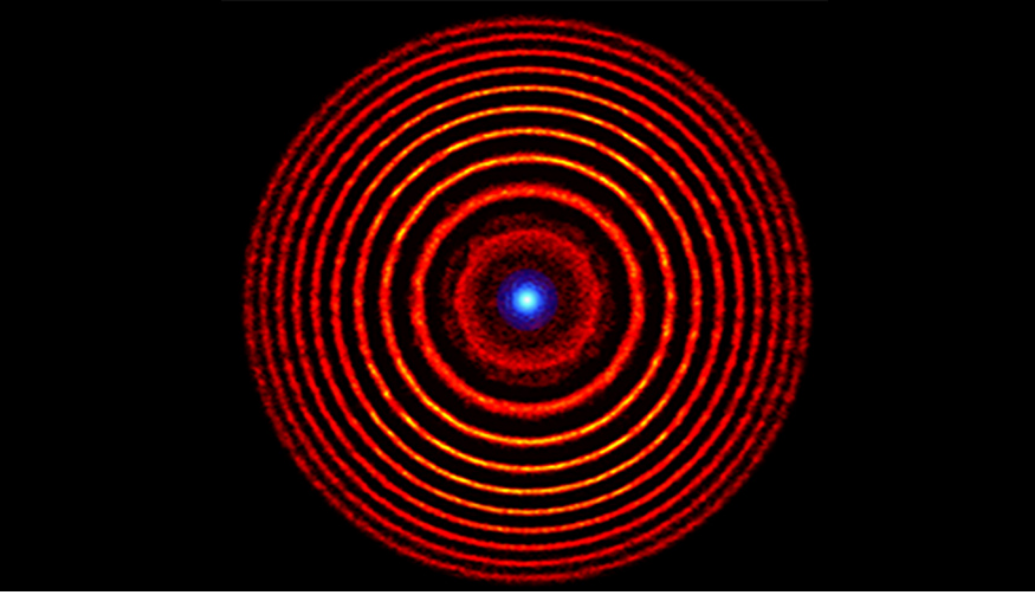
Scott Wilks
Lawrence Livermore National Laboratory
The development of Petawatt-class short pulse laser technology has made it possible to create some of the brightest sources of particles and photons on the planet, albeit at low average power. These high peak power lasers enable sub-nanosecond photon, proton, and neutron radiographic snapshots of dense solids and plasmas, as well as their associated electric and magnetic fields, with near-micron spatial resolution, with the additional ability to create high energy density plasmas via isochoric heating. In this seminar, we show how two specific laser developments are influencing how we think about relativistic laser plasma interactions. First, we discuss how the development of kilojoule class “long” short pulses (from 1 to 20 ps in duration) with large spots (~ 50 micron) made us rethink some of the fundamental electron acceleration mechanisms that underlie short pulse laser matter interactions, and how this is helping us improve these radiographic sources for HED experiments. Next, we will see how the development of new “short” ( from 100 fs to 1 ps) pulse lasers with high average powers as high as 300 kW are forcing us to examine the impact of laser wavelength on our current radiographic sources, while at the same time opening the door to completely new applications that are currently exclusively handled by high average power particle accelerators. These new applications include novel methods for measuring nuclear cross sections, nuclear waste transmutation, and short pulse-based ignition methods for Inertial Confinement Fusion.
Guillaume Loisel
Sandia National Laboratories
Models for the Sun and stars remain uncertain today because opacity models are unable to reproduce previou...
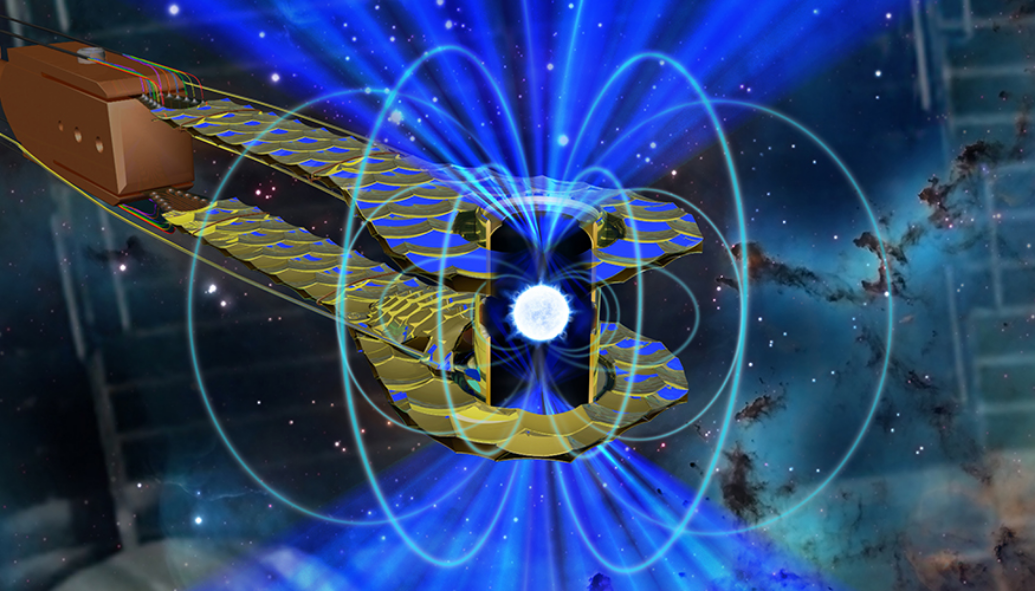
Guillaume Loisel
Sandia National Laboratories
Models for the Sun and stars remain uncertain today because opacity models are unable to reproduce previous iron opacity measurements at stellar interior conditions [Bailey et al. Nature (2015), Nagayama et al. PRL (2019)]. Time-resolved spectroscopy using a novel hCMOS Ultra-fast X-ray Imager (UXI) is transforming stellar interior opacity measurements at the Sandia Z facility in three important ways. First, we can directly measure whether temporal gradients affected the published results. Prior data recorded on x-ray film had duration given by the 3-nanosecond backlighter and one hypothesis for the opacity model data discrepancy is that temporal integration influenced the results. A definitive evaluation for this hypothesis requires direct experimental measurement. Second, this technology can eventually enable time-resolved Fe opacity measurements. This can not only provide Fe opacities at multiple conditions from a single experiment but can also test Fe-opacity models at more extreme conditions. Third, measurements of the iron sample temperature and density evolution inevitably lead to refined understanding for the experiment. Improved understanding enables improved experiment design. In fact, time-resolved measurements have already revealed Fe-opacity samples evolve differently from simulations and the refined understanding has provided insight into how to reach more extreme opacity experiment conditions. We will discuss if the model-data discrepancies are explained by the measured gradient. We also measured time-resolved Fe absorption spectra for the first time, a first step toward time-resolved opacity. We will discuss the remaining challenges and our strategy to obtain the first time-resolved opacity measurements on Z.
Dr. James Kog
QST Research Scientist
Quantum electrodynamics (QED), which describes the interaction of photons with electrons, has been tested experimen...
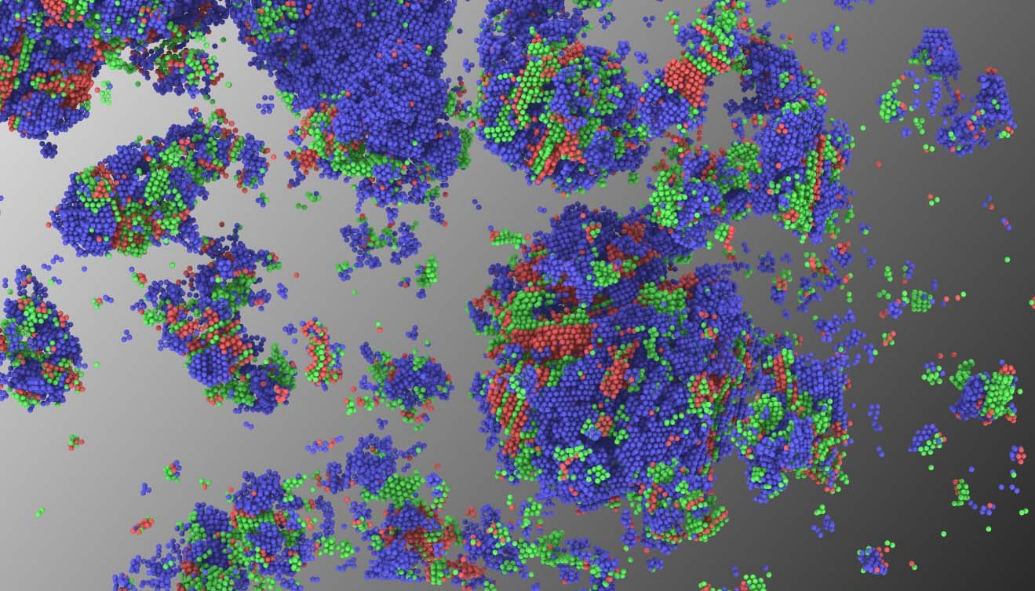
Dr. James Kog
QST Research Scientist
Quantum electrodynamics (QED), which describes the interaction of photons with electrons, has been tested experimentally and found to agree with experiments to high precision to lowest order. However, higher order measurements are required to test QED. Delbrück scattering is a higher order process, which involves the scattering of photons off the Coulomb fields of nuclei and is the only one which has been measured due to its large cross section. We have found recently that polarized gamma ray sources can achieve high precision measurements of Delbrück scattering. Currently, there are many petawatt-class laser facilities operating, being constructed, and planned around the world. Such laser systems can produce extremely high flux highly polarized gamma rays in laser-plasma, electron beam-laser interactions. Therefore, they have the possibility of measuring Delbrück scattering to high precision. We believe this will be of great interest to the plasma and fusion research community at large.
Professor Burkhard Militzer
Department of Earth and Planetary Science, University of California, Berkeley
This talk will focus on computer simulations o...

Professor Burkhard Militzer
Department of Earth and Planetary Science, University of California, Berkeley
This talk will focus on computer simulations of matter at extreme conditions and compare with on-going experimental work. We will discuss our publicly available first-principles equation of state (FPEOS) database for matter at extreme conditions that we put together by combining results from path integral Monte Carlo and density functional molecular dynamics simulations. We provide our equation of state (EOS) tables for the elements H, He, B, C, N, O, Ne, Na, Mg, Al, and Si as well as the compounds LiF, B4C, BN, CH4, CH2, C2H3, CH, C2H, MgO, and MgSiO3. For all these materials, pressure and internal energy are provided over a wide density-temperature range from 0.5 to 50 g/cc and from 105 to 109 K. Results from 5000 first-principles simulations were combined. In this talk, we focus on isobars, adiabats and shock Hugoniot curves of different silicates in the regime of L and K shell ionization. Starting from the EOS tables of the individual elements and compounds, we invoke the linear mixing approximation to predict the shock properties of arbitrary binary and ternary mixture. We compare with experimental results for H2O, CO2, and CH.
Karry Wong
Lawrence Livermore National Laboratory
HEDS Center Fellow
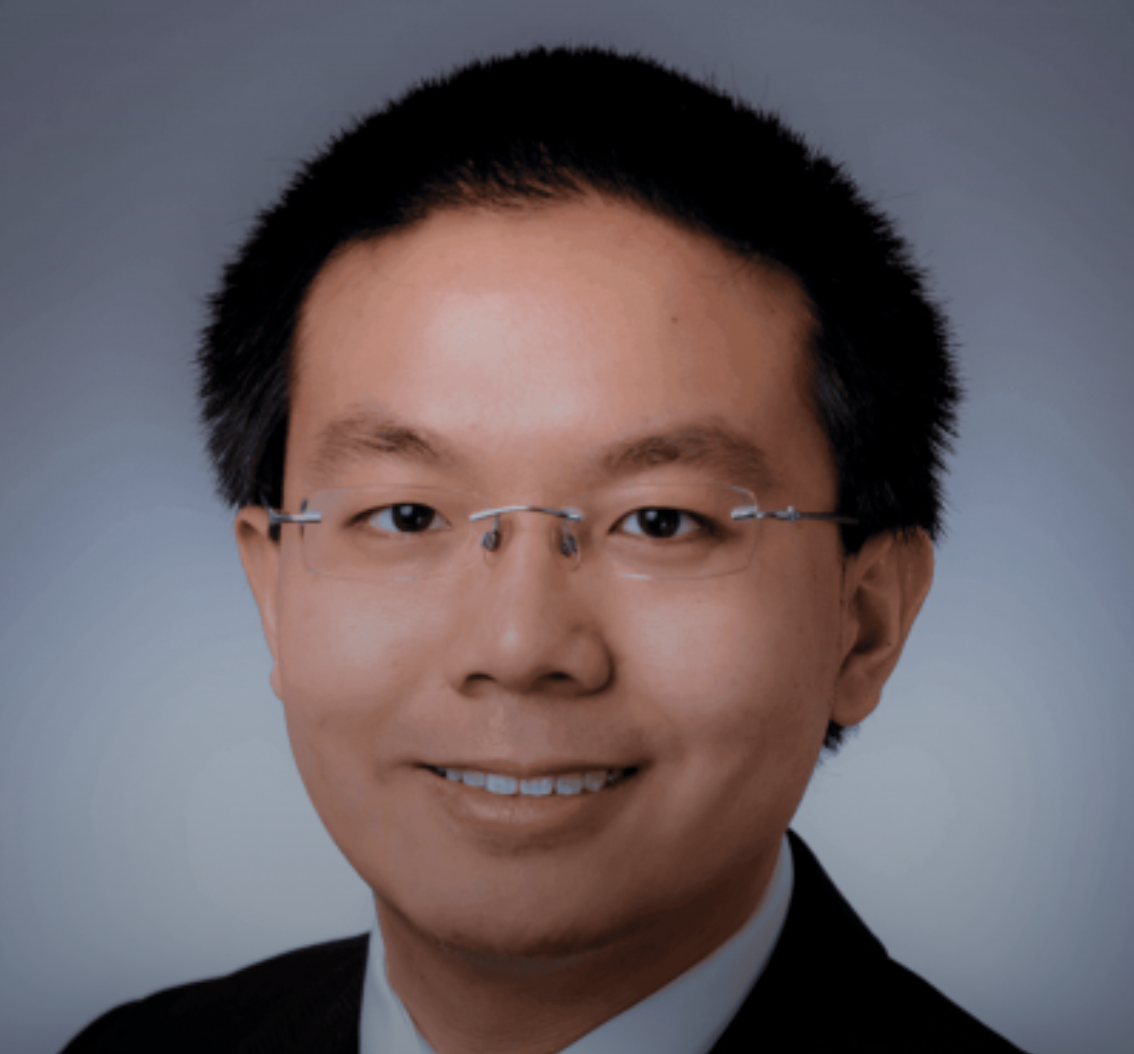
Karry Wong
Lawrence Livermore National Laboratory
HEDS Center Fellow
3D electron temperature measurements of inertial confinement fusion (ICF) hotspots can help us understand fusion plasmas. They enable us to study hotspot degradation, its energy balance mechanisms, and various of its thermophysical quantities such as pressure and density. In this seminar, I will present a generalization of the use of a class of computed tomography algorithms, Algebraic Reconstruction Techniques (ART), to reconstruct the 3D x-ray emission distributions emitted by the ICF hotspot. This is done in various x-ray energy channels from a very limited number of 2D hard x-ray (18‒30 keV) penumbral image projections. This diagnostic technique enables the inference of spatially resolved hotspot electron temperatures on the NIF. I will present synthetic data studies that quantify effects of e.g. statistical noise, source geometry, number of lines-of-sight, as well as some experimental data results that exhibit different hotspot geometries.
Dr. Arianna E. Gleason
SLAC National Accelerator Laboratory
Stanford University
The study of matter under extreme conditions is a highly inter...

Dr. Arianna E. Gleason
SLAC National Accelerator Laboratory
Stanford University
The study of matter under extreme conditions is a highly interdisciplinary subject with broad applications to materials science, plasma physics, geophysics and astrophysics. Understanding the processes which dictate physical properties in warm dense plasmas and condensed matter, requires studies at the relevant length-scales (e.g., interatomic spacing) and time-scales (e.g., phonon period). Experiments performed at XFEL light sources across the world, combined with dynamic compression, provide ever-improving spatial- and temporal-fidelity to push the frontier. This talk will cover a very broad range of conditions, and give examples of case-studies closely related to geophysics, Astro(bio)physics, planetary-, and fusion energy-sciences, as enabled by microstructure visualization and control from in situ, ultrafast X-ray diffraction and imaging. Two case studies will be discussed: 1) an examination of crystal plasticity and strength of shock-compressed hcp-iron to ~200 GPa, and 2) void collapse physics in ICF ablator materials.
Professor Natsumi Iwata
Institute of Laser Engineering at Osaka University
Kilojoule class petawatt lasers enable relativistic light irradiation over pi...

Professor Natsumi Iwata
Institute of Laser Engineering at Osaka University
Kilojoule class petawatt lasers enable relativistic light irradiation over picoseconds (ps) with large focal spots. Such lasers open up access to a new regime of high energy density plasma physics where non-equilibrium plasma forms quasi-stationary structures in the open system. In this regime, mesoscale phenomena between the kinetic and fluid scales are important. Electron acceleration becomes efficient by stochastic accelerations in the plasma blowing off at high pressure toward the laser in ps time scales. The achievable energy density also becomes higher due to a self-confinement of electrons by random field scattering and a fast diffusive heating from the hot preplasma.
Tammy Ma
Lawrence Livermore National Laboratory
Developing an economically attractive approach to fusion energy is a grand scientific and engineer...
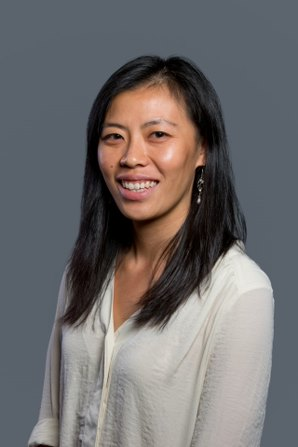
Tammy Ma
Lawrence Livermore National Laboratory
Developing an economically attractive approach to fusion energy is a grand scientific and engineering challenge. Fusion has the potential to provide clean, limitless, reliable energy, that can not only help address the urgent issue of climate change, but can also provide energy sovereignty and security for the U.S. With the recent game-changing results on the NIF, and our decades of expertise in inertial fusion science and technology, the U.S. is well-poised to lead and capitalize on the potential of inertial fusion. However, there is currently no IFE program in the U.S., and it is not part of the long-term energy R&D portfolio. This talk will survey the history of IFE research and funding in the US, review current efforts and plans to re-establish a national program, and discuss the role that LLNL can play. We will also go over some of the science and technology requirements for the realization of IFE and highlight a number of promising technologies key to eventual IFE systems that are already making steady progress.
Sally June Tracy
Carnegie Institution for Science
New facilities that couple dynamic loading platforms with high-flux X-ray sources allow for in situ X-...

Sally June Tracy
Carnegie Institution for Science
New facilities that couple dynamic loading platforms with high-flux X-ray sources allow for in situ X-ray diffraction under shock compression. Such experiments can address long-standing questions concerning the stable crystallographic phases under rapid loading and release and reveal mechanistic details of shock-induced transformations. This talk will review recent XFEL and synchrotron diffraction studies of carbonates, silicates, and oxides under laser-based and gas-gun shock compression and discuss applications of these results to geophysics and materials science. These studies demonstrate that complex high-pressure phase transitions can be explored on nanosecond timescales, improving our understanding of the dynamic response of materials under extreme conditions.
Professor Hitoki Yoneda
The Institute for Laser Science at the University of Electro-Communications in Tokyo

Professor Hitoki Yoneda
The Institute for Laser Science at the University of Electro-Communications in Tokyo
Dr. Didier Saumon
Los Alamos National Laboratory

Dr. Didier Saumon
Los Alamos National Laboratory
Christopher Orban
Ohio State University
Ultra-intense lasers are a promising source of energetic ions for various scientific, engineering and biomedical...

Christopher Orban
Ohio State University
Ultra-intense lasers are a promising source of energetic ions for various scientific, engineering and biomedical applications. An approach to enhancing both the numbers and energies of protons that has been relatively unexplored is to irradiate a thin target with two ultra-intense laser pulses simultaneously. Particle-In-Cell simulations suggest that this technique could potentially double the numbers and energies of protons (Ferri et al 2019, 2020). The spatial and temporal alignment needed to produce this enhancement is a considerable experimental challenge. In a recent paper from my group, we explore in simulations how robust this result may be to experimental conditions (Rahman et al 2021). We also worked to obtain insights into the physics of why this enhancement occurs. These results should be helpful in demonstrating the enhancement experimentally.
Niaz Abdolrahim
University of Rochester
At extraordinary high pressures, like those at the inner core of earth, materials can undergo extreme real-time ...
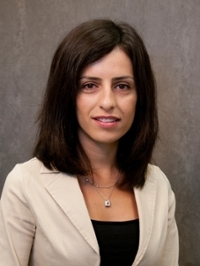
Niaz Abdolrahim
University of Rochester
At extraordinary high pressures, like those at the inner core of earth, materials can undergo extreme real-time structural changes. New phase nucleation/transformation processes take less than 10-9 and in some cases 10-12 seconds making it challenging to study by conventional pump-probe measurements due to temporal and spatial limitations. Understanding phase transition mechanisms of material and chemical systems is important for identifying new pathways of forming new matter with desired properties and behavior at extreme conditions. We propose to explore the multiscale nature of matter from atomic to the macro-scale, connecting experimental observations with atomistic simulations and deep learning computer vision techniques to answer key question of how atomic rearrangement through defect motion enables the bulk phase transformations in extreme solids.
In this talk, I present the results of a series of non-equilibrium molecular dynamics simulations to investigate the phase transformation processes of Aluminum under ramp compression loading conditions where it undergoes fcc-hcp-bcc phase transition. I will discuss the agreement in stress-density response between previously laser-driven ramp compression experiments and our simulations by cross-examining the experimental and synthetic x-ray diffraction (XRD) data. I will also discuss our methodology of AI-powered computer vision techniques to automatically learn image features and identify lattice-level mechanisms from large number of XRD data. The proposed framework will be significantly useful in capturing and analyzing new and unknown phenomena in materials under extreme conditions when no prior knowledge is available.
Justin Wark
University of Oxford
Clarendon Laboratory & Oxford Center for High Energy Density Sc...

Justin Wark
University of Oxford
Clarendon Laboratory & Oxford Center for High Energy Density Science (OxCHEDS)
The coupling of high-power nanosecond optical lasers to FELs has seen a rapid growth in the study of solid-state matter compressed to high pressures via laser-plasma ablation. Femtosecond diffraction of the x-rays during the compression process can give information on the formation of both new phases and the deformation processes that occur. An understanding of the underlying physics is of fundamental interest, as it is the plastic work performed on the sample that largely dictates the final temperatures reached. Furthermore, accurate direct temperature measurements during the compression process are hard to achieve, especially if the target is kept relatively cool (compared with shock compression) via a ramped application of the pressure. Information on the plasticity mechanisms operating at the lattice level can, at least in certain cases, be obtained by monitoring lattice rotation by x-ray diffraction, and from such measurements we can infer which slip systems are active, and to what degree. In this seminar I will discuss several experiments that have taken place over the past few years where such texture evolution has been studied in copper and tantalum samples and show how the results of them are consistent with recent molecular dynamics simulations at the single crystal level, as well as finite element plasticity simulations operating at the mesoscale. I will conclude by commenting on the need to develop in situ temperature measurements, and on the assumptions often made that dynamic compression experiments are of direct relevance to planetary science.
Professor Farhat Beg
University of California, San Diego
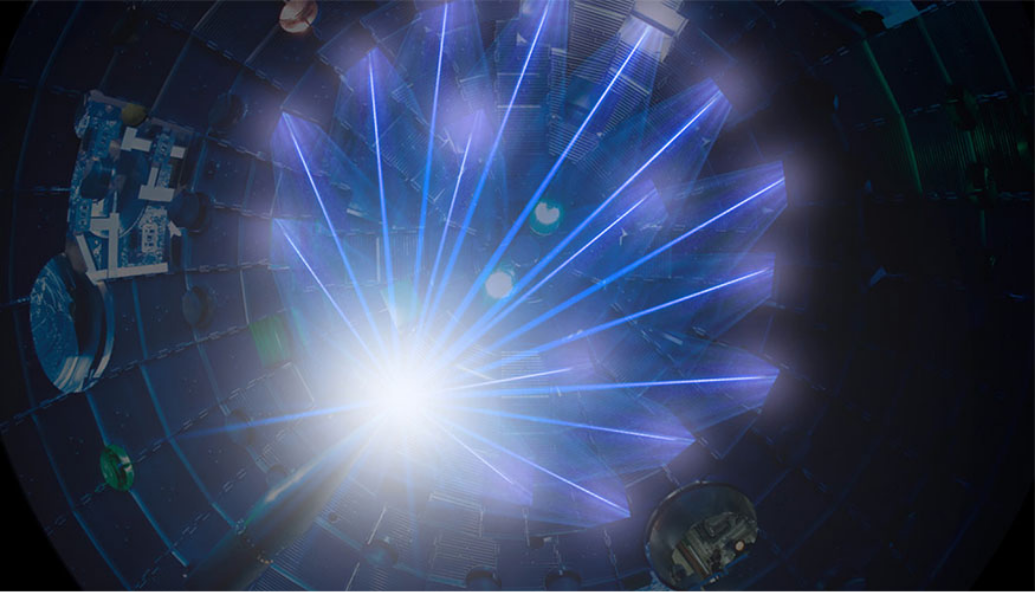
Professor Farhat Beg
University of California, San Diego
Professor Kiminori Kondo
Kansai Photon Science Institute (KPSI)

Professor Kiminori Kondo
Kansai Photon Science Institute (KPSI)
Debra Callahan
Lawrence Livermore National Laboratory
One of the scientific milestones in ...

Debra Callahan
Lawrence Livermore National Laboratory
One of the scientific milestones in fusion research on the path to ignition is creating a burning plasma. A burning plasma occurs when the energy deposited by the fusion-produced alpha particles is the dominant source of heating of the plasma—this is a necessary step to reach ignition. Over the last year, experiments on the NIF laser have reached this state using two indirect-drive designs; these two designs use larger capsules than had been used previously while maintaining the other important parameters of implosion velocity, low-mode symmetry, late-time ablation pressure, and high Z mix. To drive larger capsules with the same amount of laser energy, the larger capsules had to be driven in a similar size hohlraum, which makes maintaining a symmetric drive more difficult, and required the use of additional techniques to mitigate low-mode asymmetry.
One of these designs, Hybrid E, has also achieved ignition by the Lawson criterion. Under that definition of ignition, the fusion-produced alpha heating dominates the power balance in the hotspot—overcoming radiative and conduction losses. The experiment on Aug 8, produced 1.35 MJ, which is a capsule gain (yield/capsule absorbed energy) of about 6x. The target gain, yield/laser energy, was 0.7—which did not meet the NAS definition of ignition = gain 1. This design is likely on the ignition cliff, which means it is in a sensitive part of parameter space— repeat experiments to date have all achieved capsule gain > 1 but with lower yields than the August experiment.
Since the start of experiments on NIF, progress has been made in steps. At each step, a combination of experimental data (including improved diagnostics), theory, and modeling is used to identify and understand the limiters in performance. New designs are then developed using this understanding—this generally results in an increase in performance until the next limiter becomes dominant. This cycle has produced several physics milestones on the way to ignition. First was fuel gain, where the neutron yield exceeds the energy in the deuterium-tritium (DT) fuel. Next was “alpha heating,” in which the neutron yield is doubled due to the additional energy deposited in the DT fuel by alpha particle stopping. Now, we have achieved the burning plasma state. In this talk, we will review these new designs and experiments and show how the August experiment compares with several published ignition metrics.
June Wicks
John Hopkins University
Laser-driven shock compression ...
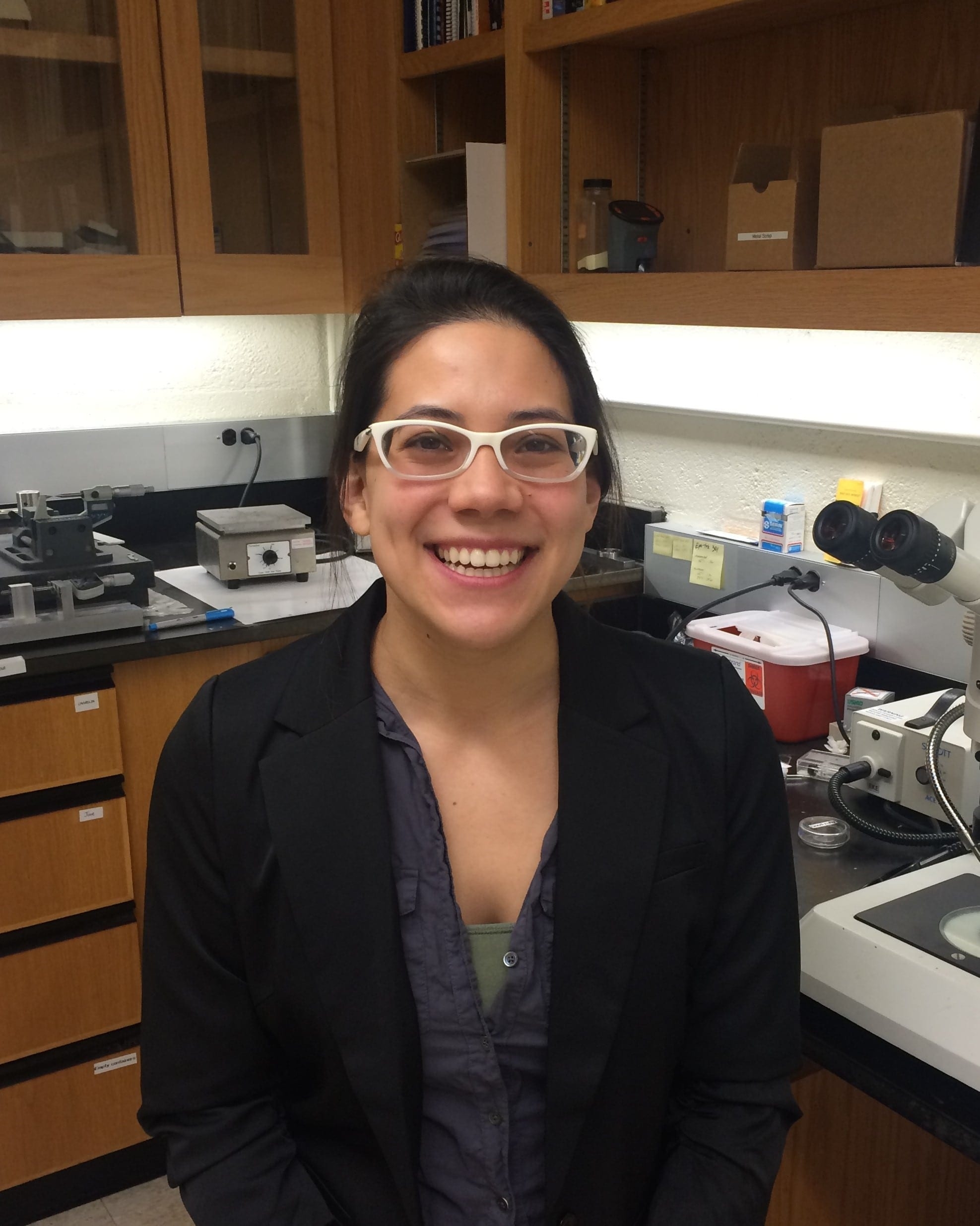
June Wicks
John Hopkins University
Laser-driven shock compression enables experimental study of material properties at unprecedented pressures and temperatures. Experiments that probe these extreme conditions are conducted at timescales approaching the limits of atomic mobility, convoluting kinetic effects into observations of phase transitions. In this talk, I will present a suite of studies of the MgO Hugoniot aimed at constraining the phase diagram, comparing effects of crystallographic orientation, timescale (decaying vs steady shocks), and x-ray vs pyrometry diagnostics. I will discuss the implications of this work for our understanding of phase transitions under dynamic compression and our ability to experimentally extricate thermodynamics from dynamics.
Omar Hurricane
Lawrence Livermore National Laboratory
Conventional belief in inertial confinement fusion (ICF) is that high laser power and low DT fuel ...
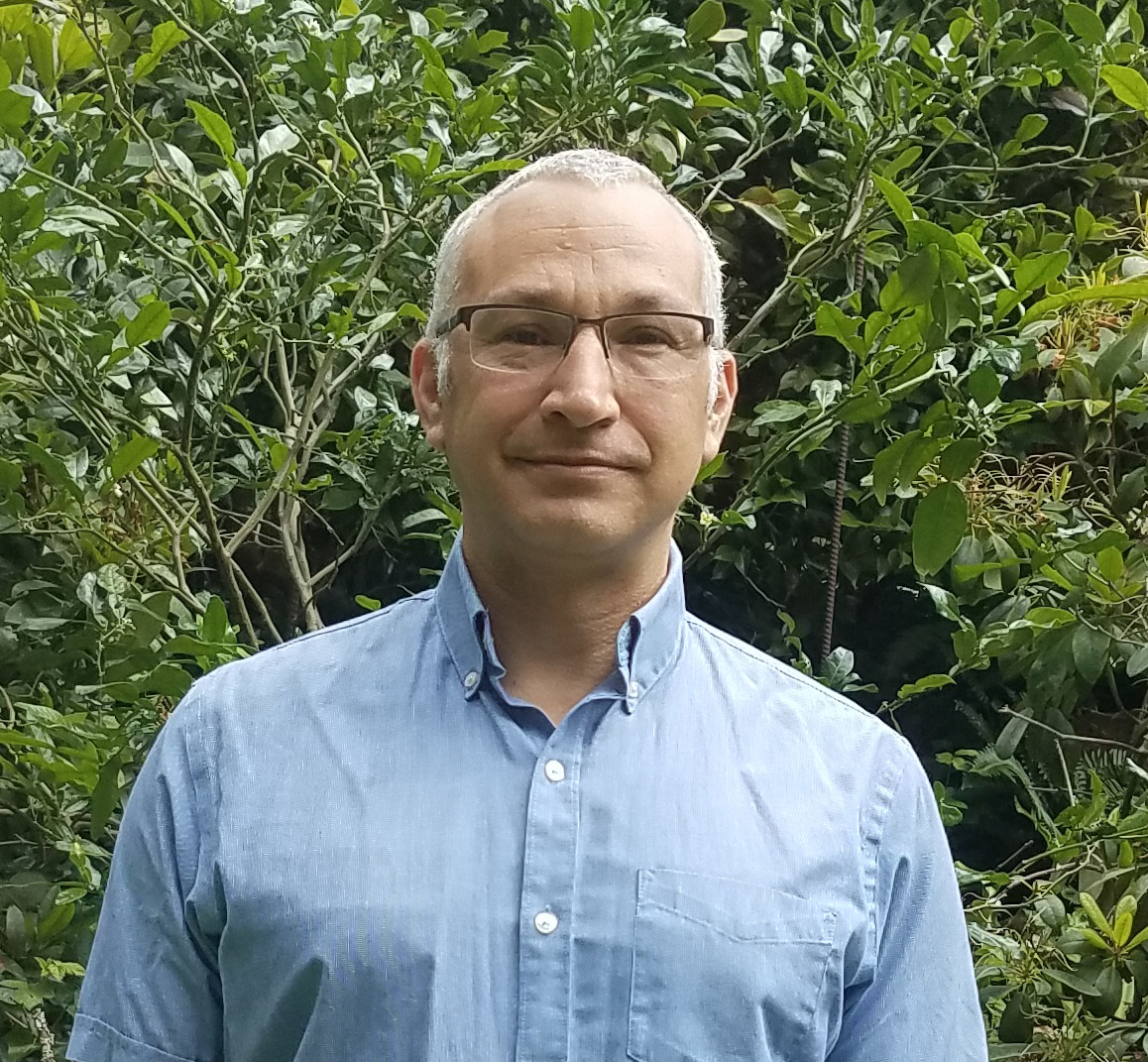
Omar Hurricane
Lawrence Livermore National Laboratory
Conventional belief in inertial confinement fusion (ICF) is that high laser power and low DT fuel adiabats are required for obtaining ignition. The textbooks in ICF make no mention of the concept of “coast-time,” yet implosion experiments on the NIF have repeatedly shown better success with higher adiabat designs driven to very short coast-times. Understanding why took time. Reduced coast-time (the time between peak ablation pressure and implosion bang-time) is important for maintaining shell compression and high stagnation pressure. Theory has recently revealed that coast-time has a subtle connection to the radius at which peak velocity (Rpv) is achieved. Reduced Rpv can compensate for high fuel adiabat and allow access to exceedingly high stagnation pressures. The ignition relevant metric EP2 (where E is hot-spot energy and P is hot-spot pressure) is exceedingly sensitive to Rpv, indicating that even relatively small decreases in Rpv can rapidly push an implosion towards igniting. This understanding was key to moving the Hybrid-E implosion into the burning plasma regime, and now, to the scientific ignition threshold with a fusion yield of 1.35 MJ and capsule gain of >5 on August 8, 2021. In this talk, we tell the story of how we pieced together puzzling observations and theory of this obscure, but critical bit of ICF physics over a period of 8 years.
Alex Zylstra
Lawrence Livermore National Laboratory
Improving the ...
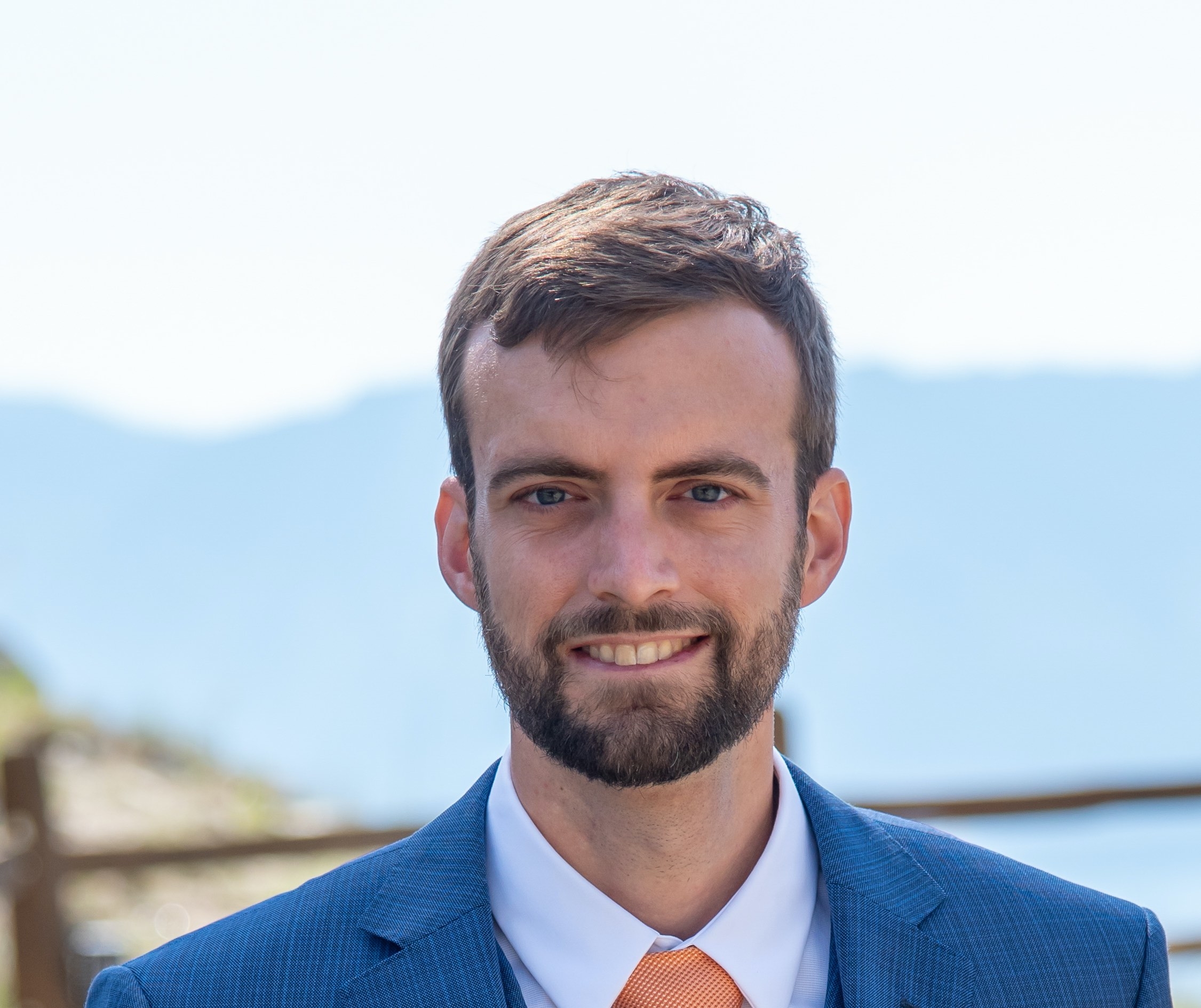
Alex Zylstra
Lawrence Livermore National Laboratory
Improving the performance of implosions on NIF by increasing the energy coupled to the capsule has been a strategy pursued in the last several years. The main challenge in improving the energy coupling is in increasing the hohlraum efficiency while maintaining both control over the radiation drive symmetry and key implosion parameters, such as the implosion velocity and coast time. Improved hohlraum efficiency with symmetry control was recently demonstrated in the “Hybrid E” platform, which introduces a small amount of wavelength detuning (Dl) to alter the amount of cross-beam energy transfer and increase drive on the hohlraum waist. Recent work has increased the velocity and increased the late-time ablation pressure as the capsule implodes, both of which lead to large increases in stagnation pressure and implosion performance, with the yield tripling from earlier results. These implosions have now entered the burning plasma regime, with Qa ~ 1.5. A detailed comparison of the increased stagnation pressure with these key design parameters, and expected scaling relations, will be discussed to guide the path forward towards even higher implosion performance.
Christine Wu
Lawrence Livermore National Laboratory
An equation of...

Christine Wu
Lawrence Livermore National Laboratory
An equation of state (EOS) plays a key role in encapsulating state-of-the-art scientific advances into a set of physical models that can then be utilized by hydrodynamics simulations to improve their predictive capability. In this talk, we first give a brief update on the status of multiphase EOS development at LLNL. We then illustrate this development methodology by describing the construction of a wide-ranged multiphase EOS for elemental iron (Fe), consisting of five phases: α (bcc), ε (hcp), γ (fcc), δ (high-T/low-P bcc), and liquid. The free-energy models for the phases are constrained by fitting to experimental data in both lower-pressure and high-pressure regimes, and to the predictions of ab initio electronic-structure calculations at higher pressures and temperatures. We show that our resulting multiphase Fe EOS is in excellent agreement with a diverse range of static and dynamic high-pressure experimental data, and in many cases provides substantially better agreement than other currently used multiphase Fe EOS models. It should thus enable more accurate predictions of complex high-P,T processes involving Fe and Fe alloys in a host of high-energy-density physics problems, including those of great interest to planetary science.
Howard M. Milchberg
Lawrence Livermore National Laboratory
Recentl...
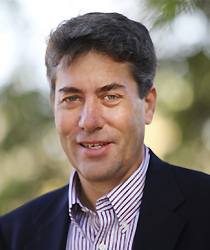
Howard M. Milchberg
Lawrence Livermore National Laboratory
Recently, we have achieved record all-optical laser wakefield acceleration results at opposite ends of the laser energy and plasma density ranges. Using < 3 mJ/ pulse at 1 kHz and near- critical density, 100-micron thick plasmas, we have produced low divergence, 15 MeV quasi-monoenergetic electron bunches. At three to four orders of magnitude lower plasma density, we have generated bunches up to 5 GeV by injecting and guiding 13 J pulses in meter-scale plasma waveguides. I will describe these experiments and what led up to them.
Madison E. Martin
Lawrence Livermore National Laboratory
Short-pulse las...
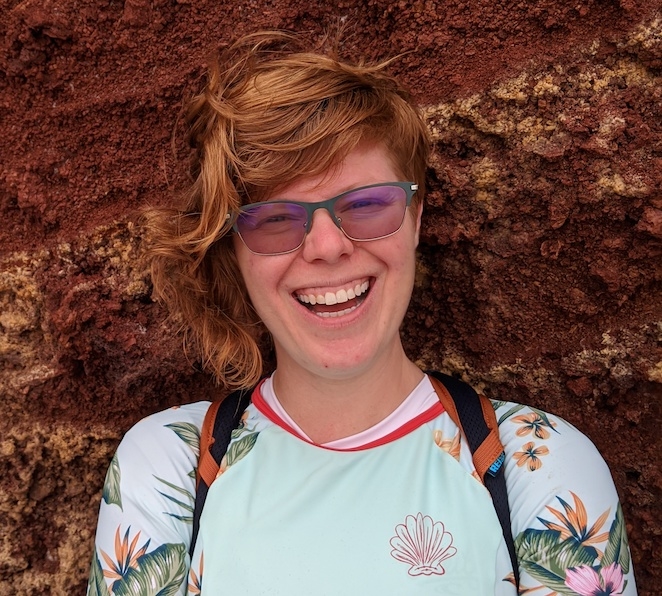
Madison E. Martin
Lawrence Livermore National Laboratory
Short-pulse laser facilities, such as the Orion Laser Facility, can be used to directly heat targets to conditions consistent with the radiative zone of the sun, enabling the measurement of x-ray emission which can be used to infer opacity of materials at extreme conditions. Opacity is a critical parameter in the transport of radiation in high energy density (HED) systems such as inertial confinement fusion capsules and stars. The resolution of current disagreements between solar models and helioseismologically observations would benefit from experimental validation of theoretical opacity models. As a complement to existing platforms using long pulse lasers (ex. the National Ignition Facility) and pulsed power machines (ex. the Z Machine), short pulse lasers can be used to heat targets to even higher temperatures and densities. Time-integrated and time-resolved spectra of iron were measured at the Orion short-pulse laser. The K-shell spectra of sulfur, potassium, and chlorine were measured and used to diagnose the plasma conditions. We will discuss two main modeling approaches used to simulate spectra for comparison with measured spectral data: 1) ray trace of 1-dimensional (1D) radiation-hydrodynamic models and 2) stand-alone spectral calculations employing more sophisticated atomic physics. We show that while our 1D radiation-hydrodynamic methodology has been useful for predicting and matching many aspects of the experimental spectra, this simplified method does not create a consistent picture for all materials in the experiment. We therefore introduce future improvements to the methodology that may aid in understanding sensitivities of our emission-based opacity platform.
Frank Graziani
Lawrence Livermore National Laboratory
The High Energy De...
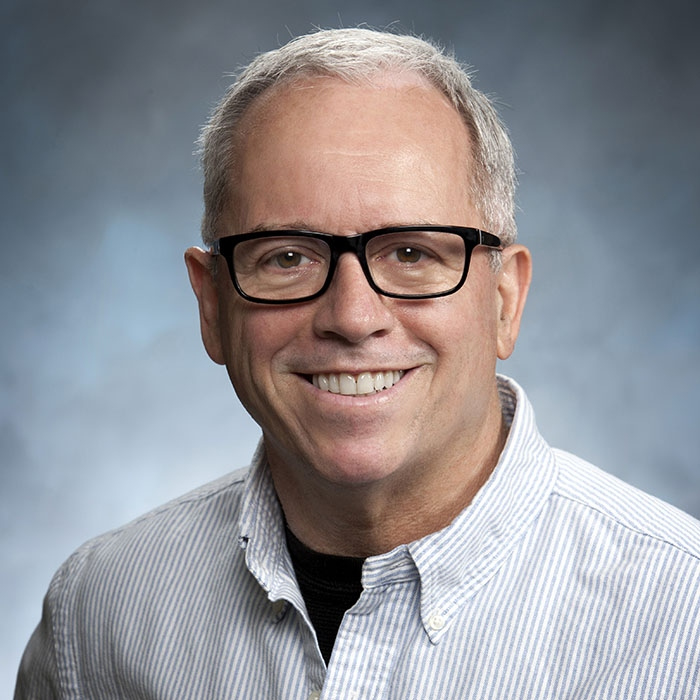
Frank Graziani
Lawrence Livermore National Laboratory
The High Energy Density Science Center (HEDSC) was established in late 2015 through a joint agreement between the Physical and Life Sciences, Weapons and Complex Integration, and NIF and Photon Science directorates. The Center’s goal is to build a high energy density community through support of, and collaboration with, academic partners and to integrate those efforts with the programs at LLNL. The Center is built around four focus areas: (1) education, (2) outreach through workshops and seminars, (3) workforce pipeline to the programs, and (4) enabling research collaborations between LLNL and academic partners. In this talk, we will present the year FY21 in review and look at what lies ahead in FY22. FY21 saw continuation in education programs with a new version of a quarter long course on HED diagnostics offered in collaboration with UCSD and featuring new distance learning technology and guest lecturers. In addition, the HED center education program is working with WCI to help offer training for new designers. Another new HEDS Center Fellow was selected and our current HEDS Center Fellow, Andrew Longman, completed his first year. Besides educating the next generation of HED scientists, the HEDS Center continues training students through internships and thesis opportunities. Our outreach and collaboration activities continue through a vibrant seminar series, university partnerships, a sabbatical program, and visits to community colleges and undergraduate institutions. Inclusion and diversity are an important aspect of our mission and the Consortium for HEDS (FAMU, UC Merced, Morehouse and LLNL) and the Center help a number of students within HEDS. The Consortium’s goal is to provide research and education opportunities in HEDS for under-represented groups and thereby increase diversity in the field. Under the restrictions of the pandemic, the summer internship program continued, on-line. The sabbatical program has now started after a hiatus in FY21. In FY22 we hope to expand the sabbatical program and begin outreach visits to K‒12 and community and undergraduate colleges. A call for a new HEDS Fellow postdoc position is out and more HED education programs are planned. In FY22 we will continue to foster international collaborations in HEDS, supporting another thesis student from FAMU, as one finishes, and continue the internship program.
Uri Shumlak
University of Washington
The equilibrium Z pinch is a unique...

Uri Shumlak
University of Washington
The equilibrium Z pinch is a unique approach to magnetic confinement fusion that requires no external magnetic field coils. Equilibrium conditions are reached through the use of sheared plasma flows, which enhance stability and provide a path to thermonuclear fusion. Simple geometry and strong scaling of fusion gain with pinch current form the cornerstones of this compact fusion device. The sheared-flow-stabilized Z pinch has been developed through integrated computational and experimental investigations at the University of Washington in collaboration with Lawrence Livermore National Laboratory. Experimental results demonstrate plasma stabilization, sustained thermonuclear fusion, and agreement with theoretical and computational predictions. Building on these advances, Zap Energy Inc. is developing a low-cost fusion reactor core based on the equilibrium Z pinch.
Sophia Malko
Princeton Plasma Physics Laboratory
Ion stopping in warm de...

Sophia Malko
Princeton Plasma Physics Laboratory
Ion stopping in warm dense matter is a process of fundamental importance for the understanding of the properties of dense plasmas, the realization and the interpretation of experiments involving ion-beam heated warm dense matter samples, and for inertial confinement fusion research. The theoretical description of the ion stopping power in warm dense matter is difficult, notably due to electron coupling and degeneracy, and measurements are still largely missing. In particular, the low-velocity stopping range around the Bragg peak, that features the largest modelling uncertainties, remains virtually unexplored. We present proton energy loss measurements in warm dense plasma at lower projectile velocities than previous experiments, coming significantly closer to the Bragg-peak region. Our energy loss data, combined with a precise target characterization based on plasma emission measurements using two independent spectroscopy diagnostics, demonstrate a significant deviation of the stopping power from classical models in this regime. In particular, we show that our results are consistent with recent first-principles simulations based on time-dependent density functional theory.
Yuan Shi
Lawrence Livermore National Laboratory
Quantum computing may le...

Yuan Shi
Lawrence Livermore National Laboratory
Quantum computing may lead to game-changing capabilities for science and technology. However, many practical problems are classical, and exactly how quantum systems can be used to solve classical problems remains an open question. Moreover, for plasma physics, many problems are nonlinear, whereas quantum computers are designed to carry out unitary evolution in Hilbert spaces, which are fundamentally linear. In this seminar, I will present the first results using real quantum hardware to simulate a toy problem that is relevant to laser-plasma interactions. A generally applicable algorithm is derived, which encode three-wave interactions on quantum hardware. The algorithm is implemented using two compilation approaches. First, each simulation step is compiled as a sequence of standard gates. Using this approach, ~10 simulation steps can be carried out before results are corrupted by decoherence. Second, each simulation step is compiled as a single customized gate, which is realized using optimal control. Using this approach, the simulation depth is extended to ~100. Our results highlight the advantage of using customized gates on noisy intermediate-scale quantum computers. The generalized nonlinear gates are potentially useful building blocks for solving a large class of problems in plasma/fluid dynamics, nonlinear optics, and lattice gauge theories on quantum computers.
Christopher Schuh
Department of Materials Science and Engineering, MIT
W...
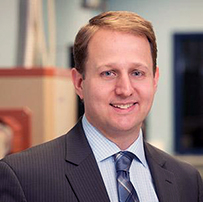
Christopher Schuh
Department of Materials Science and Engineering, MIT
When a microparticle projectile strikes a metal, the resulting physical phenomena that occur are diverse and depend significantly upon the particle velocity. Plasticity sets on at very low velocities, and follows a scaling law whereby the plastically-damped energy rises with velocity. Analysis of this scaling law, through direct measurement of the damped energy itself, can provide quantitative measurements of the prevailing strength of the metal at rates up to and even beyond 108 s-1. At higher velocities, new phenomena set on which disrupt this scaling law. In many metals, hydrodynamic jetting flow occurs beyond a certain critical velocity, leading to a solid-state splash that dissipates extra energy. This jetting involves significant local deformation at the particle surface, and is associated with rupture and flaking of the native oxide layer and the formation of metallic bonds when both impactor and substrate are metals. In other cases, plastic dissipation can lead to enough adiabatic heat production to cause local melting, which is also associated with shifts in the observed energy-velocity scaling law. Finally, when combined with post-mortem analysis of impact sites, such studies can lead to new insights on microstructure evolution within the metal, including the development of nanotwins and nanostructures uniquely associated with high-rate, high-strain deformation.
Hans Rinderknecht
University of Rochester
Laboratory for Laser Energetics
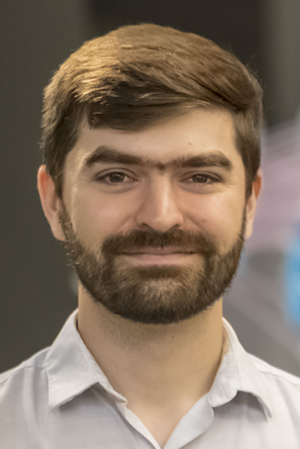
Hans Rinderknecht
University of Rochester
Laboratory for Laser Energetics
In relativistically transparent interactions, lasers with intensity above 1020 W/cm2 drive relativistic current filaments in classically overdense plasmas, producing an azimuthal magnetic field that is comparable in strength to the laser field. This magnetic filament traps electrons, which are directly accelerated by the laser pulse to 100’s of MeV and efficiently radiate MeV-scale photons by synchrotron radiation. This seminar introduces this novel process, presents scaling laws that describe the radiated photon energy and radiation efficiency, and shows the results of initial experiments performed at the Texas Petawatt Laser (TPW). The analytical scaling laws are validated by 3-D particle-in-cell simulations in two regimes of focal radius. The efficiency of gamma radiation is predicted to exceed 10% for optimized designs with laser intensity above 6×1021 W/cm2. Experiments at TPW using moderate laser intensity (1021 W/cm2) demonstrate the predicted signatures of electron acceleration and x-ray radiation from a subset of microchannel targets filled with low-density CH foam. This ultrafast photon source may be optimized for a wide range of applications in HED, nuclear, and high-field physics.
Alexey Arefiev
University of California, San Diego
High-power high-inten...
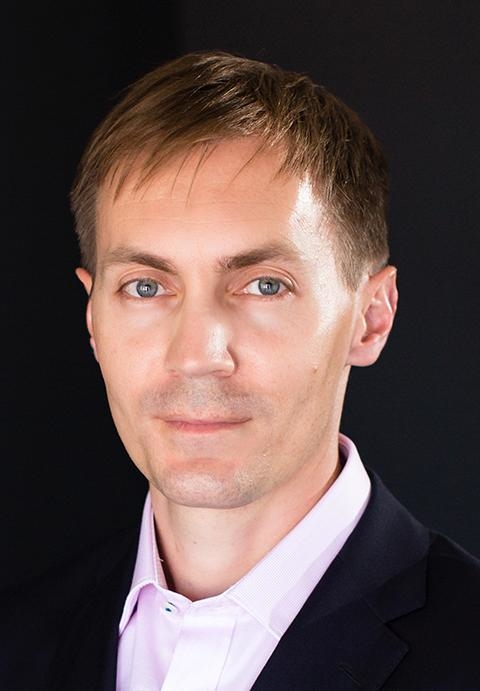
Alexey Arefiev
University of California, San Diego
High-power high-intensity multi-beam laser systems that are becoming operational around the world can now be used to create a platform for high-field science that is based on relativistically transparent magnetic filaments driven by irradiating lasers within a dense plasma. The strength of the quasistatic field can be comparable to that of the laser, reaching the megatesla level. This talk will review several phenomena that can be studied with experimentally achievable laser intensities at multi-PW laser facilities. These include emission of dense gamma-ray beams in the quantum regime and electron-positron pair creation from light alone. Astrophysical environments are known for exotic physics regimes that involve generation of extreme magnetic fields and creation of matter and antimatter from light alone. The discussed platform provides a potential path towards recreating relevant regimes in laboratory conditions.
Arianna E. Gleason-Holbrook
SLAC National Accelerator Laboratory
Stanford University

Arianna E. Gleason-Holbrook
SLAC National Accelerator Laboratory
Stanford University
The study of matter under extreme conditions is a highly interdisciplinary subject with broad applications to materials science, plasma physics, geophysics and astrophysics. Understanding the processes which dictate physical properties in warm dense plasmas and condensed matter, requires studies at the relevant length-scales (e.g., interatomic spacing) and time-scales (e.g., phonon period). Experiments performed at XFEL light sources across the world, combined with dynamic compression, provide ever-improving spatial- and temporal-fidelity to push the frontier. This talk will cover a very broad range of conditions, and give examples of case-studies closely related to geophysics, Astro(bio)physics, planetary-, and fusion energy-sciences, as enabled by microstructure visualization and control from in situ, ultrafast X-ray imaging.
Alison Saunders
Lawrence Livermore National Laboratory
The study of high...
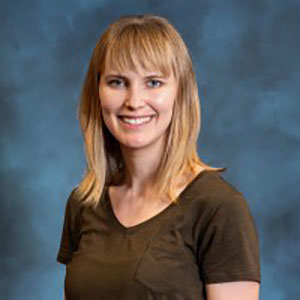
Alison Saunders
Lawrence Livermore National Laboratory
The study of high-velocity particle-laden flow interactions is of importance for the understanding of a wide range of natural phenomena, ranging from planetary formation to cloud interactions. However, given the difficulty of generating high-velocity flows of many particles, experimental observations of particle dynamics under such conditions are sparse. The interactions of ejecta microjets offer a novel experimental mechanism to study particle interactions, as ejecta microjets are micron-scale jets formed by strong shocks interacting with imprinted surfaces to generate particle plumes traveling at several kilometers per second. We recently performed experiments on the OMEGA and OMEGA EP lasers to take the first time-sequences of x-ray radiography images of two interacting tin ejecta microjets. We observe different jet morphologies and characteristics, such as densities and velocities, for different tin shock pressures of 11.7 and 116.0 GPa. But most strikingly, we observe different interaction behaviors as a function of pressure, ranging from jets passing through each other unattenuated to jets generating a corona of material around the point of interaction. We perform simulations of particle collisions to model the interactions and propose future experiments to understand the effects dominating the observed interaction dynamics.





